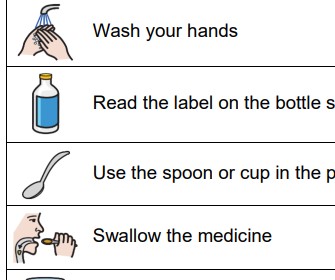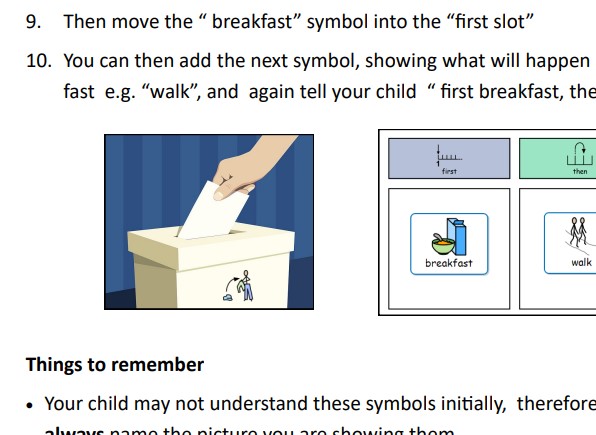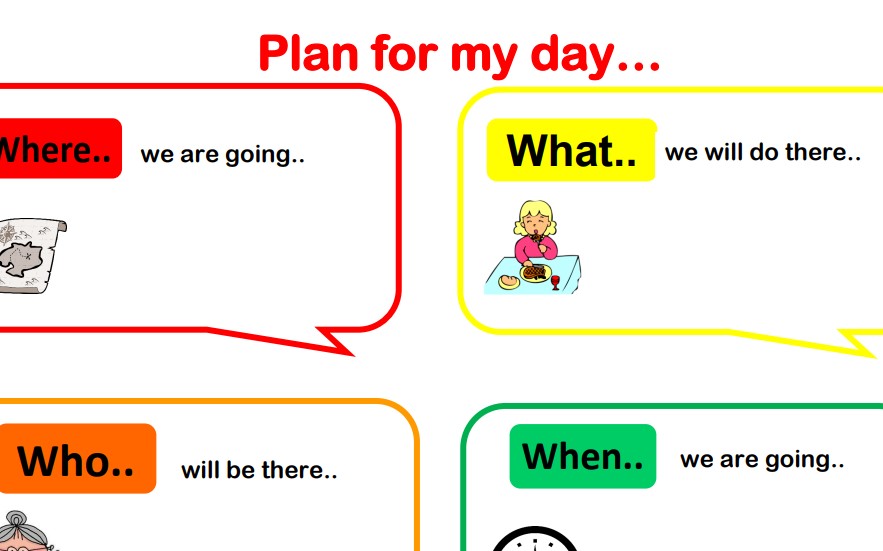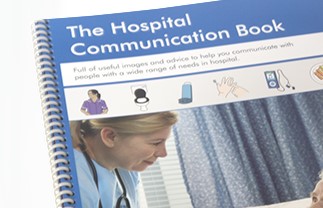Children and Young People with Mental Health Needs, Autism or Learning Disability Communication Toolbox
Communication is much more than just speaking.
Many autistic children or young people, or those with a learning disability, need us to adapt our communication. Communication tools such as visual supports, now and next boards, social stories and easy read materials are important reasonable adjustments that health care staff can offer to meet communication needs.
This communication toolbox provides links to free resources to download from a variety of sources including NHS trusts across the UK and access to a range of communication tools for your hospital setting.
It is vital to understand the individual language and communication needs of children and young people to support personalised care. These resources may help some children and young people. However, those who have a severe or profound and multiple learning disability (PMLD) may need more tailored support for language and communication as these resources may not be accessible. It is important to find this out from families, carers, or other trusted communication partners.
Visual Supports
Some children and young people need visual supports alongside verbal communication to help understanding. These can be used on communication boards, individual images for flash cards which support understanding, now and next boards, and on timetables.
Start your toolkit by creating a folder full of visual supports for common hospital procedures relevant to your clinical area:

Where does it hurt visual guide
Royal Surrey NHS Foundation Trust

Having a blood test
Great Ormond Street Hospital for Children NHS Foundation Trust

Having an ECG
Great Ormond Street Hospital for Children NHS Foundation Trust

Giving a urine sample
Great Ormond Street Hospital for Children NHS Foundation Trust

Inserting an NG tube
Great Ormond Street Hospital for Children NHS Foundation Trust

How to take medicine
Great Ormond Street Hospital for Children NHS Foundation Trust

How to use an inhaler
Great Ormond Street Hospital for Children NHS Foundation Trust

Having an x-ray
Royal Surrey NHS Foundation Trust

Having an ultrasound
Royal Surrey NHS Foundation Trust

Having a plaster cast
Royal Surrey NHS Foundation Trust
Top tip!
When using visual supports, do so in a quiet area away from distracting back ground noise and keep verbal language to a minimum.
Now and Next boards and visual timetables
Expand your toolbox by adding a now and next board (sometimes called 'first and then' boards) and a timetable. These are often used in school and at home to help with a child's daily routine.
They help alleviate anxiety about what's coming next. For example, they can be used in a hospital setting to provide more information about a patient's journey. Read this guide on how to use them.
You will need individual images relevant to your hospital area to cut up and use on your 'now and next boards', or as part of a timetable - try this image bank. Download your own now and next board template or try this timetable template to use in your hospital.

How to use first and then boards
Leicestershire Partnership NHS Trust

Image bank
Leeds and York Partnership NHS Foundation Trust

Now and next board template
Hereford and Worcestershire Health and Care NHS Trust

Timetable template
Hereford and Worcestershire Health and Care NHS Trust
Top tip!
Keep it simple with only 2 activities on your board.
Easy read
An important reasonable adjustment is to make sure information is accessible - this can mean providing easy read materials.
Easy read means information placed in a format with accompanying pictures and clear text, helping meet the communication needs of some autistic people or those with a learning disability. This is a particularly important reasonable adjustment for young people.
Start with a guide about attending your clinical area:

Having a clinic appointment
Great Ormond Street Hospital for Children NHS Foundation Trust

Staying in hospital
Sheffield Children's NHS Foundation Trust

Going to the dentist
NHS England
Team this up with easy read guides for common health conditions relevant to your clinical area.
Further information on how to create your own easy read materials
Leeds and York Partnership NHS Foundation Trust
Photo symbol library to help with creating easy read materials
NHS South of England
Top tip!
Make your easy read guides available to download on your hospital website, and don't forget the NHS accessible information standard for further guides and advice.
Social stories
Coming to hospital can be a daunting experience for some autistic children and young people, or those with a learning disability. A social story helps explain what is going to happen, as well as providing social cues on feelings and behaviour.
These stories work best when specific pictures of your hospital are included within the story and are relevant to the patient journey that is likely to occur in your area of the hospital.
See this guide to creating your own social story for your hospital area. This picture story is a great example of a social story done well. It helps you talk about the things that might go on in hospitals.
Alternatively, this hospital book is a great example of a story with more words and symbols, and acts as good guide to follow. Books Beyond Words also offer a wide range of ready-made stories and an app for your hospital tablet.
Top tip!
If you know that an autistic child or a child with a learning disability is attending your hospital it is a great idea to send a social story out in advance.
Hospital communication books
If you are short on time, hospital communication books provide a wide range of symbols and communication tools all packaged together. They are a good resource to have available in your hospital setting.

Hospital Communication Book
Learning Disability Partnership Board in Surrey / Mencap

The Hospital Communication Book
The Clear Communication People Ltd
Top tip!
Don't overload by going through the whole book at once; concentrate on the area relevant to aid your communication.
Need some support in using communication tools? See our communication tools section for great video guides and easy to follow tips.
For further information and comments please email learningnetwork@nhselect.org.uk
Acknowledgements
With thanks to:
- Books Beyond Words
- Communication People
- Easy Health
- Great Ormond Street Hospital for Children NHS Foundation Trust
- Herefordshire and Worcestershire Health and Care NHS Trust
- King's College Hospital NHS Foundation Trust
- Leeds and York NHS Foundation Trust
- Lambeth Autism Advisory Service
- National Autistic Society
- A picture of health
- Royal Surrey NHS Foundation Trust
- Sheffield Children's NHS Foundation Trust
- University Hospitals of North Midlands NHS Trust